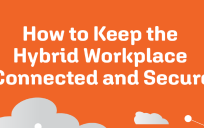This morning I read a fascinating article from The New Yorker, Groupthink: The Brainstorming Myth, by Jonah Lehrer. The article points to one of the early founders of the concept of brainstorming, Alex Osborn. During the 1940’s, Osborn was one of the advertising agency industry titans, his book, “Your Creative Power,” was received very well in 1948 and turned into a best seller.
The New Yorker pointed out some of Osborn’s essential rules of brainstorming. Briefly, Osborn stated:
- Need for an absence of criticism and negative feedback to develop a comfortable setting for brainstorming participants
- Quantity over quality – make your mind deliver, let information flow
- No judgement zone
Osborn wrote a couple other best selling books, all looking to teach people how to unlock creativity. His book titles, “Wake Up Your Mind,” and “The Gold Mine Between Your Ears,” all helped Osborn cement himself in the industry. The article continued to explain how Osborn’s rules of no judgement, quantity over quality, and no negativity are still being used by many agencies today.
The most intriguing element of this story was that although the brainstorming techniques that Osborn developed are still being implemented, they rarely ever produce the best ideas. The story identified a couple of examples that showed when people start off by working alone, and then pool together their ideas as a group, better ideas are created. Another observation from the studies debunking Osborn were that people not only produce results with some criticisms, groups can actually thrive through conflict. This was really interesting to think through – conflict and criticism force people to reassess their ideas, values and positions.
I’d recommend picking up an issue of the New Yorker and checking out the article, it was a good read. There is a lot of really interesting information, even a brief discussion of how Steve Jobs forced Pixar employees to run into each other to spark conversations, just by the way he chose to design the building.
In the government world, I think this story had some interesting applications – especially in how we think about open innovation and crowdsourcing information. Government does not need more quantity of options – government needs increased quality. At the same time, creative solutions need to be encouraged, so too much structure is not going to allow people to unlock their creativity. One the key questions for me is how can government take some of these lessons learned and apply them to a digital environment? As government keeps moving towards digital platforms, and finding new ways to engage, how government can efficiently structure digital interactions, filter through information and develop ways to encourage people to debate and express criticisms constructively?
The New Yorker closes by saying “It is the human friction that makes the spark,” so how can government do this in a digital environment?




In my opinion there is way too much whiteboardsmanship and very little in the way of experimentation. People come up with great ideas, and many times they are wrong. If we instead structure our projects and operations in such a way to encourage experimentation with objective methods of quantifying success, we can discover which ideas work in the real world, and which ones sound good but add no real value.
Come up with ideas and split test them! That’s how we really can know what is quality and what is not.
Regarding the filtering issue, I think some form of an internal ideas future/prediction market, where people could get behind ideas (and allow for experimentation of the top ideas) could be an interesting way to allow help instigate friction/competition, filter out choices that no one would be willing to support, and allow for the experimentation of ideas that Josh rightly points out is so important.
There would obviously be some challenges with this in government, including the sensitivity of many government functions, but I would love to see how this could work out if it started small.
Hi, I edited my comment and it’s posted as a blog here:
https://www.govloop.com/profiles/blogs/how-to-encourage-innovation-in-government
Guided purposeful brainstorming is where its at. Brainstorming for brainstorming is useless because there is no investment, no objective outcome, and little utility to real problems. For such sessions to be useful, they must have an end goal (new or revised process, product, or service), be structured, have an outside disinterested moderator to keep poeple focused and positive. This applies well to government because such teams come from across the functional areas and are not necessarily dedicated to a single purpose. Structure provides ground rules, time lines, rules of engagement, and expectations regariding outcome. A disenterested moderator keeps the team focused and on subject, resloves conflict (which is good in the creative process), and records progress (or lack thereof). Most importantly, this process is lead from the top giving the team legitimacy in terms of importance of the outcome from leadership.
I’ve been a part of such teams in our Air Force Smart Operations 2012 (AFSO 21) process. These teams revised the congressional reporting and correspondence processes in the Air Force reducing time of receipt to delivery to Congress by over 50%.